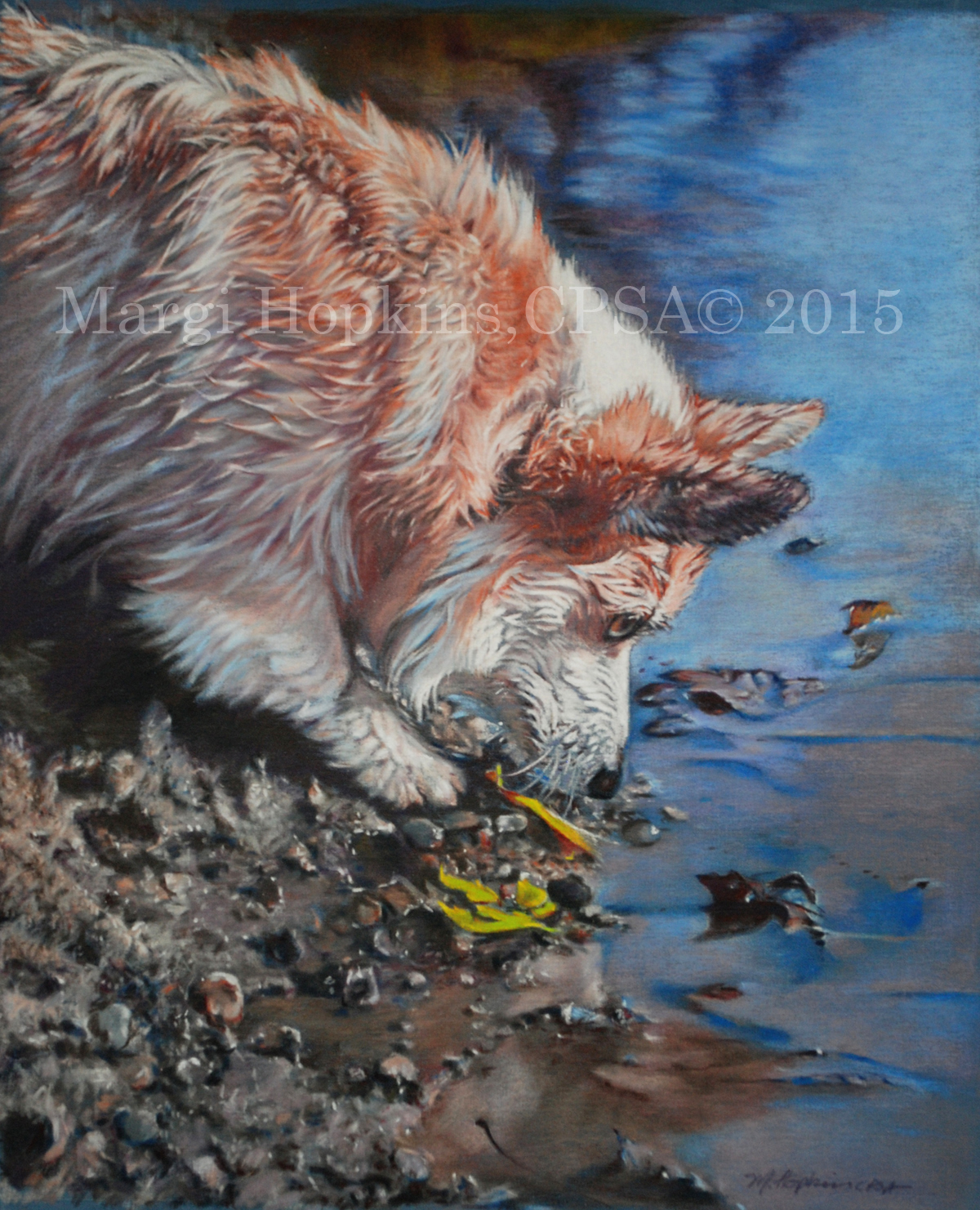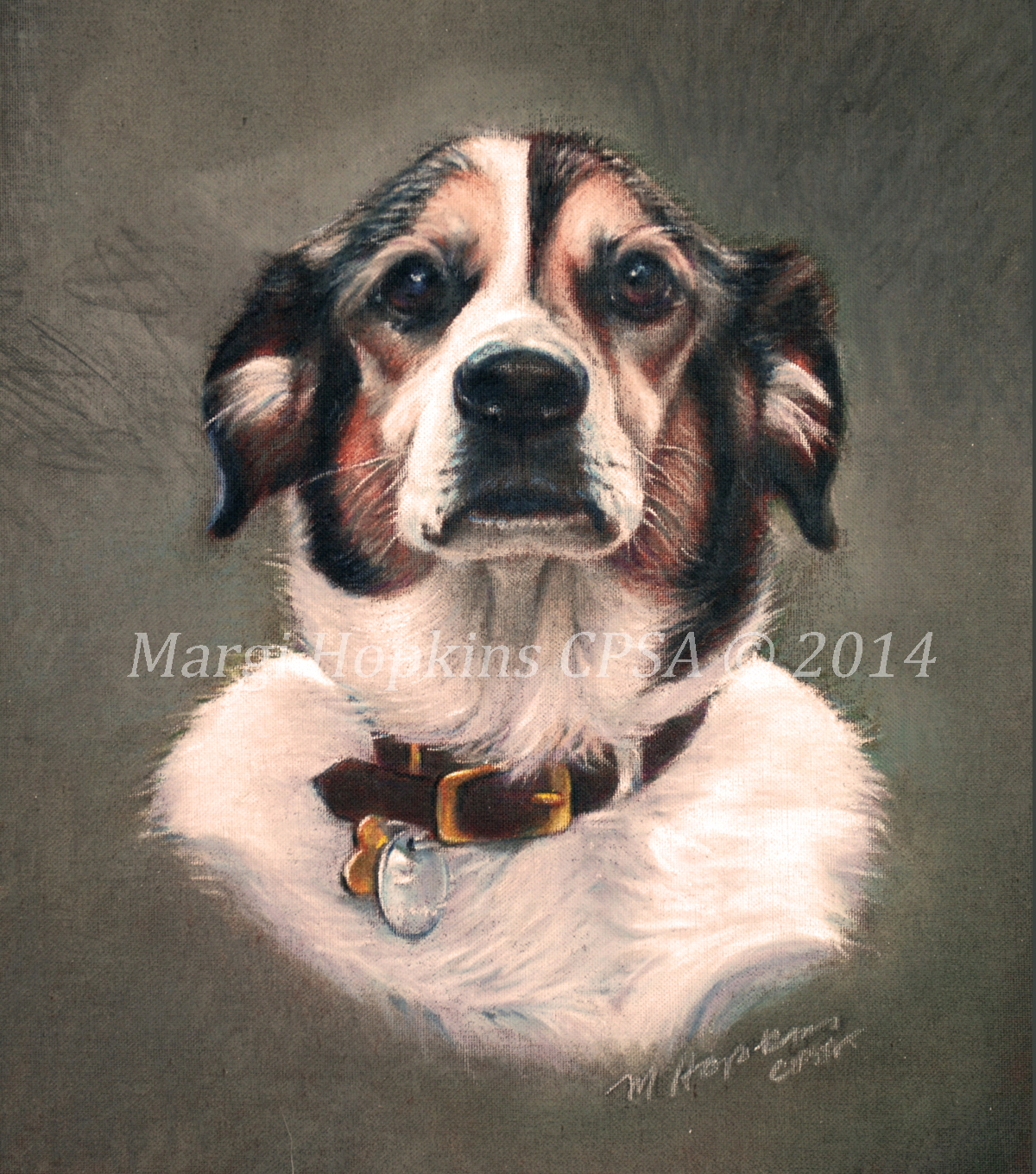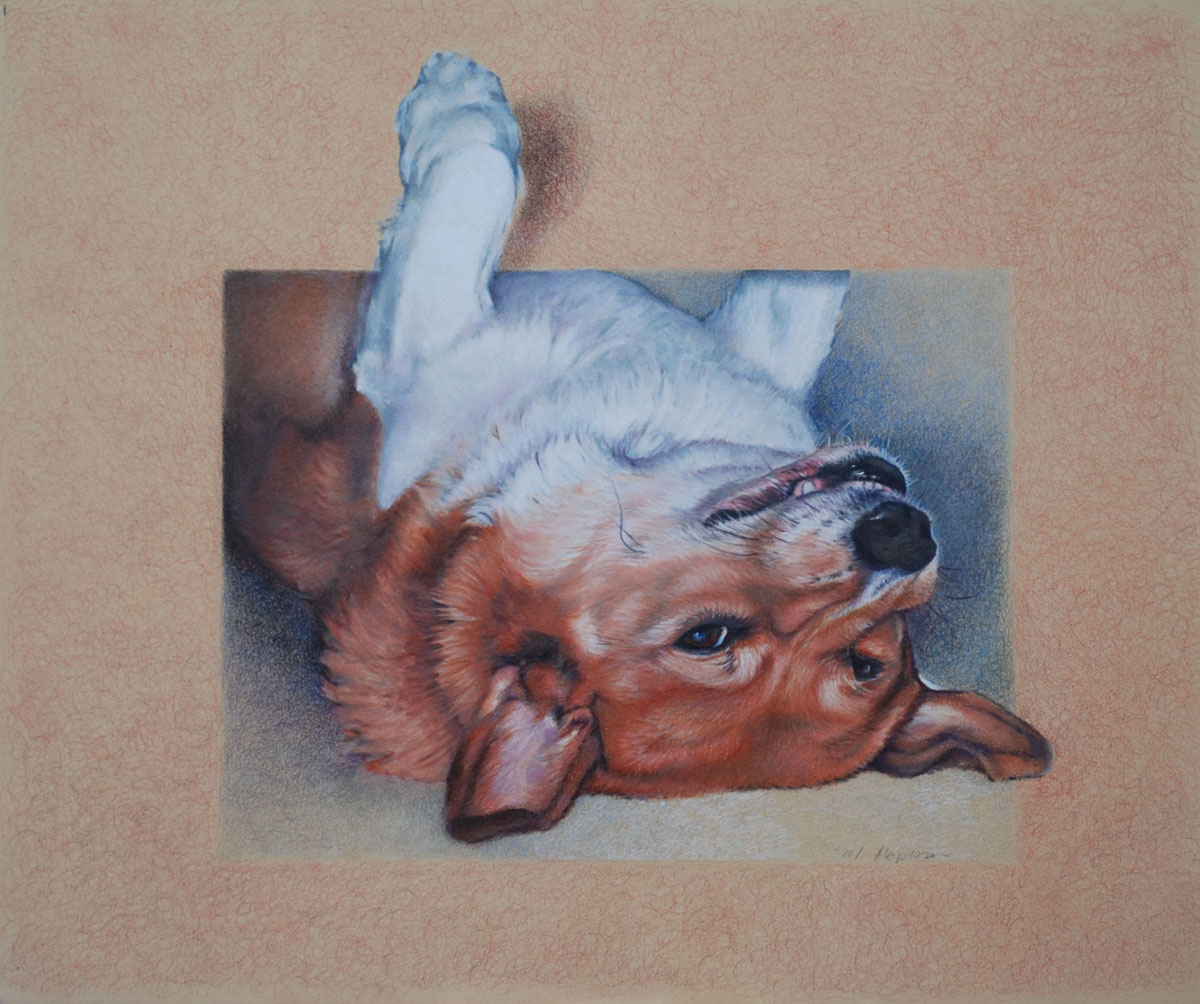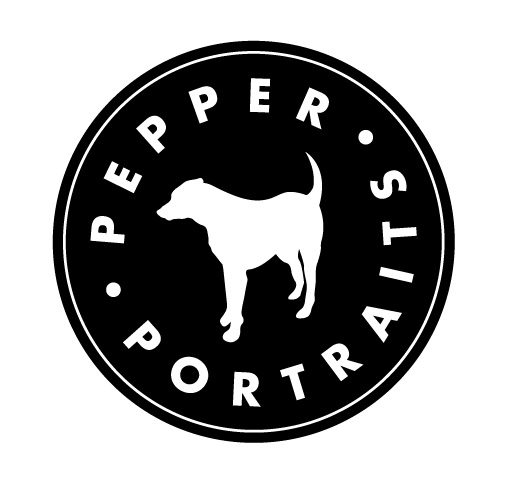Here is Preston the Welsh Corgi, 12x14" colored pencil on linen, my reference photos. This was a custom portrait created for the best of clients who expressly encouraged me to paint whatever made me happy; thus the unusual angle and wet fur.
The client, myself and her two dogs, spent hours walking and photographing at two different locations, until I had many beautiful reference shots from which to choose. My art needs a story and Preston provided one when he unexpectedly followed his housemate, a Labrador Retriever, straight into the river. Corgis are all chest and no legs. Preston had never been beyond wading. He sank like a stone, then bobbed to the surface. The swimming technique, newly minted, added to the hilarity of Preston's alarmed expression, but he arrived safely to the water's edge soaking wet and disgruntled.
Christmas rush!
I just finished two small paintings for a lovely client who wished to create the perfect gifts for her two children: table top original portraits of their two dogs. Each child chose a puppy fourteen years ago. They are now gray in the muzzle and a little slower, but otherwise healthy. The children, both in college, miss their pups. I spent a few hours one afternoon, photographing and getting to know the dogs, while also learning about the family and the mom. The photographs and expressions were chosen by her. We wished to capture each dog's personality in a tiny 5x7 head shot. This is not an easy task. In fact, a lot can be lost in one small tick of the pencil. I struggled with these. There was concern that the dog Ed, looking at the viewer and pleading to be petted, might appear to be giving dominant eye contact. Thanks to my husband's suggestion, a touch of dark to the eyebrow made the difference in the perceived expression. The other dog, Lucy held a strange pose which finally necessitated the inclusion of parts of her foreleg; otherwise her head would have seemed tipped over.
I decided to use colored linen mat as the surface to give these a painterly feel. Lucy, who is mostly black, is painted on a dark blue mat and Ed, who has a lot of browns and reds, is on a red mat. Using colored mat board, even if completely covered with pigment, is similar to an under paint wash and provides tone.
When my client finally saw the finished pieces she was completely satisfied. This is a blessing, because I never know what a client will think until they have the art in hand. Now I can relax for a bit and paint something new, something BIGGER.
Hot Dog goes to the beach!
Hot Dog was just accepted into "Man's Best Friend" Exhibition at Las Laguna Gallery, March 6th- March 28 http://www.laslagunagallery.com/
Read MoreChubs
Chubs a 12 year old Corgi with lymphoma, lasted longer than expected. He held on through Christmas 2012 for a family reunion and beyond- spending his last months with his best friend, who was parted from him and sent to Afghanistan early this year. Soon after, Chubs quietly let go and passed on. His boy, my nephew, is returning to the states in a few months. This is a gift. Sh-h-h-h! 
Who Rescued Whom wins People's Choice Award
Who Rescued Whom? Finished
Finished photo
Read MoreHyde Park Square, Ohio, Art Show. Be there or be square!
Holiday commissions time! Gift certificates available.
Archival Framing Tips
Archival Framing Tips
By Margi Hopkins
Without getting scientific. There are three main enemies to your art: light, pollutants such as acid and moisture.
Use acid free materials. Light in its many forms whether incandescent, florescent or natural, has the capacity to fade, burn or change the color of your art. Have you ever left a newspaper in your car? Most likely it turned yellow in a matter of hours. Newspaper is printed on wood pulp paper, which has a very high acid content. When the light hits the paper, it oxidizes the acid in the paper turning it yellow. Enough exposure will actually burn the paper and make it crispy. This often shows up on old documents or books as little brown spots or foxing. When light hits the surface of your art it oxidizes anything acidic, including droplets of spattered coffee, finger print oil, or masking tape. Your best bet is to use materials that are as stable as possible. Stay informed. “Archival” materials used in the 80’s have been replaced by far superior products. Paint, draw or print your image on 100% cotton surface. Nothing acidic should touch your art. Your method of hinging, the backing and the matting must all be free of acid. Consult with your picture framer. It is his/her business to keep up with the latest methods.
Always, use an ultra violet (UV) resistant glass. There has been much discussion in our community regarding the light fastness of colored pencils. Simply put, if you frame or store art correctly, it will last. For example, a watercolor, which is an extremely light sensitive medium, will last decades if properly hung out of direct sunlight. And even though upon removing the paper mat and backing you find yellowing where the art touched those surfaces; even though you find the pigment has faded where light could reach through the old glass, the art still has plenty of life left. A trip to a paper conservator to stabilize the surface on which the watercolor was painted as well as 100% rag matting, backing, acid free hinges and UV glass, will give the art many more years. My point: blocking sunlight is key! There are two kinds of glass I recommend: Consevation Clear and Museum. Both have a film that blocks 99% ultraviolet rays. Museum glass has anti-reflective technology without the distortion often found in nonglare glass. One more thing, if possible never hang a piece of treasured art in direct sunlight.
Reduce Moisture. Moisture can seep in under the glass and condensate, eventually precipitating and ruining your art in any number of ways from paper deterioration to mold. At the very least it can stain your expensive matting. In a perfect world there would be a law against hanging art in a humid environment. Not many of us live in a museum with climate control. Cincinnati is a river town. There is no getting away from humidity here. Even with AC there are doors and windows opened, damp basements, hallways, any number of moist areas. If you decide to take your chances by hanging your favorite painting in Cincinnati, use a clear acid free tape to seal the glass to the backing before it goes into the molding. I have a colored pencil painting hanging on the wall directly next to the shower. It fogs up every day. No water under the glass so far.
It's almost Halloween! This little Pug is ready to fly to your home.
Pug Dog dressed up for halloween.
Read More


